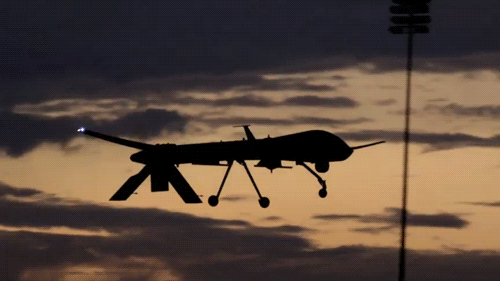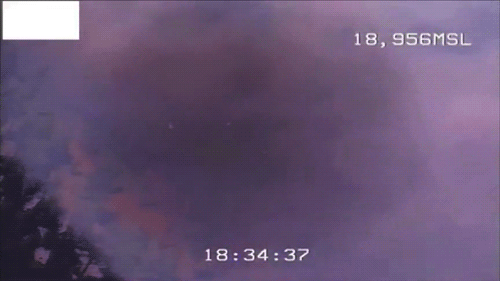Remotely-piloted aircrafts help battle California’s third largest fire
On this week's "TechKnow," Marita Davison travels to Yosemite National Park to find out how remotely-piloted vehicles are being used to fight a massive wildfire. Sparked by an illegal campfire, the Yosemite Rim fire spanned an area larger than the city of Chicago at its peak and has cost more than $100 million to fight. It is California's third largest fire in history.
The MQ-1 Predator drone has been used by the military for unmanned missions in Iraq and Afghanistan, but one of its latest domestic assignments is to be the remotely-piloted "eye in the sky" for the California Department of Forestry and Fire Protection (CAL FIRE) as they continue fighting the Yosemite blaze.
"There's basically a day-time camera, a night-time camera, and an infrared camera," explains Senior Master Sgt. Pete Kelley of the California Air National Guard as he shows Davison around the MQ-1. "It detects body heat and temperature."
After completing a round of safety and equipment checks similar to any piloted aircraft, the Predator is ready to begin a day's work.

"We're basically tasked to fly up to the fire area and check out the fire as it's burning," Kelley says. "If we have a full fuel load, it can stay up over 20 hours."
In a control room on the ground, the pilot and sensor operator can control the flight of the MQ-1 and operate its cameras to send important images and video of the Yosemite fire to CAL FIRE and Air National Guard command posts on the ground.
"The accessibility of this fire is what makes it extremely complicated and why it's grown to the size it has," says Capt. Jeremy Salizzoni of CAL FIRE. "With the inaccessibility around the entire area of the fire, it just makes getting from one point to another very difficult."
Salizzoni marvels at how technology had advanced since he began working with the Department of Forestry and Fire Prevention.
"The information is so rapid, so accurate, so immediate, that it's kind of hard to believe that I ever walked these things in the past," Salizzoni says."We're able to watch real time information and see where the fire is, what the fire is doing, potential hazards coming up, maybe advantageous area to get firefighters to to maybe catch it in certains areas that you wouldn't see with the naked eye."
Davison also visits the California Rim Fire Incident Command Center near the fire in Yosemite to see how unmanned vehicles are aiding the efforts of CAL FIRE as well as the California Air National Guard. At the Mobile Emergency Operations Center, the organizations work together to utilize information gained from drone footage to facilitate coordination, command, and control of the firefighting efforts.
"One of the biggest advantages the MQ-1 brought for us was the ability to geo-locate the fire line," explains Assistant Chief Marc Hafner of CAL FIRE. "Infrared imagery has been around for a while, but the ability to put geographic coordinates against something and immediately transmit those to us here where we can transfer those to a map and make that readily available is invaluable."
By merging the images transmitted from the day-time and infrared cameras, the National Guard and CAL FIRE are able to see where the fire is burning without being obstructed by the smoke that covers much of the park. This accuracy allows firefighters to target specific areas of the fire and stay safer as they battle the blaze.

"I've seen some violent things," says Lt. Col. Keith Ward of the California Air National Guard. "But I'm not sure I've ever seen anything more violent than how strong this fire was, how much it was crowning, how fast it was moving, and how difficult it was for folks to contain. I believe 100% that we made a huge difference."
The biggest benefit of utilizing the drones, according to Salizzoni, is the ability to help protect firefighters as they battle wildfires like the one in Yosemite. "In regards to firefighter safety and firefighting, I think we're just scratching the surface as far as it's potential," he says.
Watch "TechKnow," Sundays at 7:30PM ET/4:30PM PT on Al Jazeera America.
Error
Sorry, your comment was not saved due to a technical problem. Please try again later or using a different browser.